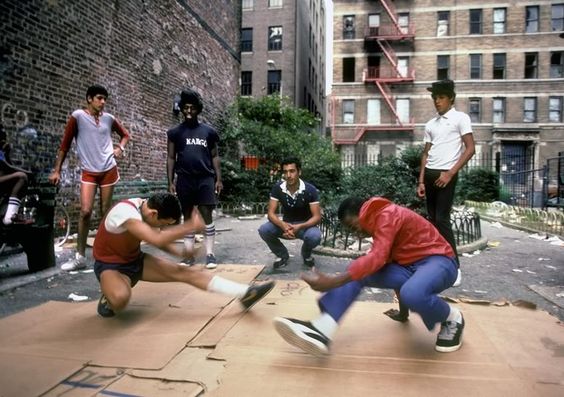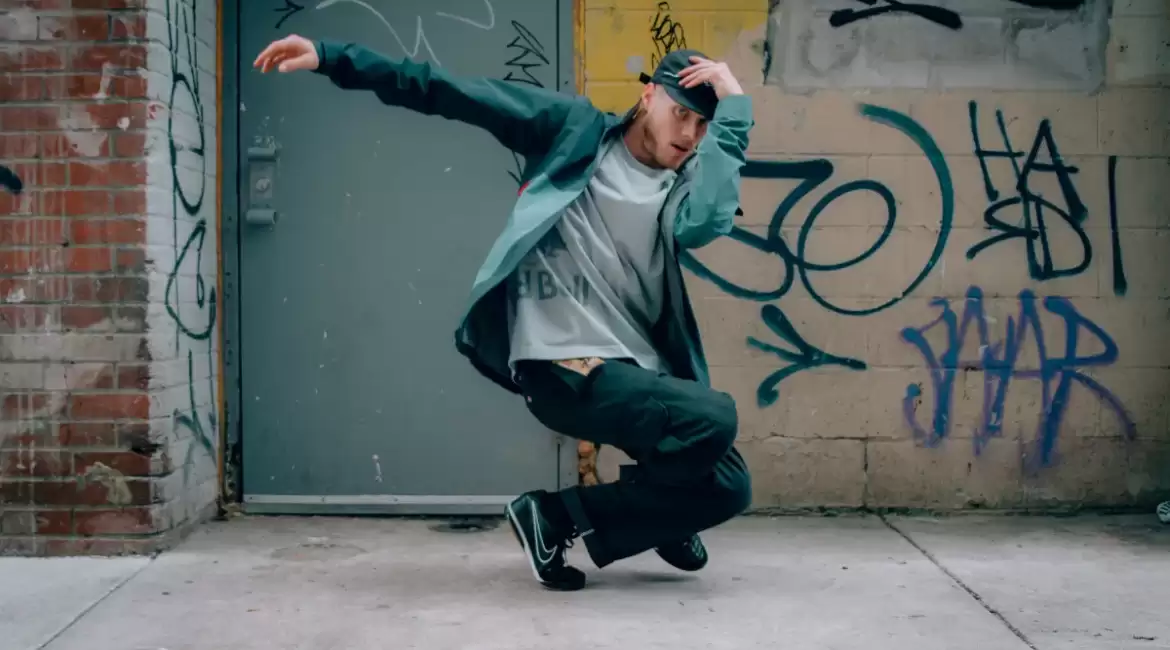Hey there! Ever wondered where breakdancing really came from? Well, get ready to dive into the fascinating world of breakdancing and uncover some hidden secrets you might not know about!
Breakdancing is more than just cool moves and funky music—it’s got a whole history behind it that’s full of surprises. In this journey through time, we’re going to dig deep into how breakdancing started and how it became the awesome dance we know today.
So, let’s put on our dancing shoes and get ready to discover the untold stories and hidden truths behind the history of breakdancing. Get ready to be amazed!
What is breakdancing?
Breaking, also known as breakdancing, a vibrant form of street dance, is characterized by its fusion of coordination, acrobatics, intricate body movements, stylistic flair, and aesthetic appeal. Emerging from the dynamic hip hop culture in the early 1970s, it stands as one of the most prominent expressions within the realm of hip hop dance styles.
What came out of it?
The transition from old-style breakdancing to the emergence of new trends marked a significant shift in the dance culture of the late 1970s. The advent of the “Freak” style, inspired by the debut album “Freak Out!” by the Mothers of Invention, signaled a departure from traditional forms and rising of new subcultures (late 1960s to mid-1970s). However, it was in 1979 and 1980 that a pivotal moment occurred with the formation of the Rock Steady Crew, a groundbreaking breaker crew that revolutionized the art form.
The Rock Steady Crew introduced a repertoire of acrobatic maneuvers previously unseen in the dance scene, including jaw-dropping feats like headspins, hand glides, and backspins. These innovative moves laid the foundation for the iconic techniques synonymous with breakdancing today.
The momentum of breakdancing surged in 1980, propelled by the endorsement of mainstream figures like Michael Jackson, whose electrifying performance of the moonwalk captivated audiences worldwide. As its popularity soared, breakdancing became a focal point for record producers seeking artists who not only possessed exceptional dance skills but also projected a wholesome image to appeal to broader audiences.
The cultural impact of breakdancing extended far beyond its roots in the hip hop community, influencing a myriad of modern dance forms. Its enduring legacy is evident in contemporary music videos, live performances, and even the routines of globally recognised artists like Britney Spears, Madonna, Justin Bieber, and many more, who continue to incorporate elements of breakdancing into their acts.

Where did breakdancing start?
The origins of breakdancing are commonly traced back to the vibrant cultural milieu of the Bronx in New York City, particularly among Latin American and African American youth. This dynamic community, steeped in creativity and innovation, served as the fertile ground where the seeds of breakdancing were sown. While the exact genesis of the art form may be debated, it is widely acknowledged that the Bronx played a pivotal role in its development.
Amidst the socio-economic challenges faced by marginalized communities in the Bronx during the 1970s, young people sought avenues of self-expression and empowerment. Drawing inspiration from diverse cultural influences, including music, dance, and graffiti art, they forged a unique and electrifying dance style that would eventually come to be known as breakdancing.
Against the backdrop of urban decay and social upheaval, breakdancing emerged as a form of resistance and resilience, offering a creative outlet for individuals to transcend their circumstances and assert their identity. The streets of the Bronx became the vibrant stage where dancers honed their craft, engaging in friendly battles and sharing their passion for movement and rhythm.
While the precise individuals and events that catalyzed the birth of breakdancing may remain elusive, its roots in the Bronx testify to the ingenuity of marginalised communities in shaping cultural phenomena that resonate far beyond their local boundaries. Today, the legacy of breakdancing continues to inspire new generations of dancers and enthusiasts worldwide, serving as a testament to the enduring power of creativity and self-expression.

What inspired breakdancing?
Breakdancing, with its roots deeply intertwined with the dynamic cultural landscape of urban America, draws inspiration from a rich tapestry of influences that span music, dance, and social dynamics.
One significant source of inspiration for breakdancing can be traced back to the electrifying performances of James Brown, the godfather of soul. His mesmerizing stage presence and rhythmic innovations captivated audiences and left an indelible mark on the emerging hip hop scene of the 1970s. Street corner DJs, attuned to the pulse of the community, seized upon the infectious beats and rhythmic breaks in Brown’s music, seamlessly blending them together to create extended sequences that provided the perfect backdrop for dancers to showcase their skills.
The eclectic nature of breakdancing is reflected in its diverse repertoire of movements, drawing from an eclectic array of influences. Elements of gymnastics, with their emphasis on strength, agility, and flexibility, find resonance in the acrobatic maneuvers executed by breakers. The Lindy Hop, a spirited partner dance originating from the Harlem Renaissance, infuses breakdancing with a sense of swing and rhythm. Capoeira, the Brazilian martial art form disguised as dance, lends a fluidity and athleticism to breakdancing, while disco’s pulsating beats and flashy aesthetics contribute to its vibrant energy.
Yet, beyond its artistic dimensions, the history of breakdancing harbors a deeper narrative that speaks to the social dynamics of urban life. Some accounts suggest that the genesis of breakdancing can be traced back to its role as a means of conflict resolution among rival street gangs. In this context, dancers from opposing factions would engage in dance battles, using their creative prowess and technical skill to outshine their adversaries. The winner, deemed to possess the most innovative and complex moves, would emerge victorious, transcending the boundaries of turf and territory through the universal language of dance.
In essence, breakdancing embodies a multifaceted cultural phenomenon, rooted in the rhythms of the streets and shaped by the collective creativity and resilience of its practitioners. From its humble origins as a form of expression on the sidewalks of urban America to its global prominence as a cornerstone of hip hop culture, breakdancing continues to evolve and inspire, testament to the enduring power of movement and music to transcend barriers and unite communities.

Where was breakdancing most popular?
Breakdancing, also known as breaking, found its epicenter of popularity in the vibrant boroughs of New York City, particularly within the burgeoning hip hop scene of the 1970s. A pivotal figure in the development of breakdancing was Kool Herc, a pioneering Jamaican DJ whose innovative mixing techniques revolutionized the art form.
Kool Herc’s approach to DJing was characterized by his astute utilization of percussion breaks from identical records, a technique that would come to define the essence of breakdancing. Known for his adeptness at isolating and looping these rhythmic interludes, Kool Herc seamlessly intertwined them to create extended sequences of pulsating beats and infectious grooves. His signature style, which he termed “cutting breaks,” became the backbone of breakdancing culture, providing the perfect canvas for dancers to showcase their skills.
In the electrifying atmosphere of New York’s dance clubs, Kool Herc wielded his turntables with masterful precision, orchestrating sonic landscapes that fueled the energy of the crowd. His command over the music was unmistakable, punctuated by his distinctive call to action: “B-boys go down.” This rallying cry served as the cue for breakdancers, affectionately known as b-boys and b-girls, to take center stage and unleash their creative prowess on the dance floor.
As the beat dropped and the rhythms pulsated through the venue, b-boys and b-girls seized the moment, executing gravity-defying moves and intricate footwork with finesse and flair. Their performances captivated audiences and propelled breakdancing into the mainstream consciousness, cementing its status as a cultural phenomenon synonymous with the streets of New York City.
From the gritty alleys of the Bronx to the neon-lit dance floors of Manhattan, breakdancing became more than just a dance form—it was a testament to the resilience, creativity, and spirit of urban youth. And at the heart of it all was Kool Herc, the visionary DJ whose pioneering contributions laid the foundation for a global movement that continues to thrive and evolve to this day.
Summary
Breakdancing has a cool history that not everyone knows about. It’s not just about dancing—it’s about where it all began and how it got to be so awesome. In this story, we’ll learn about the secrets behind breakdancing and how it became the dance we love today. So, get ready to explore the past and uncover some surprising facts about breakdancing!


Leave a reply